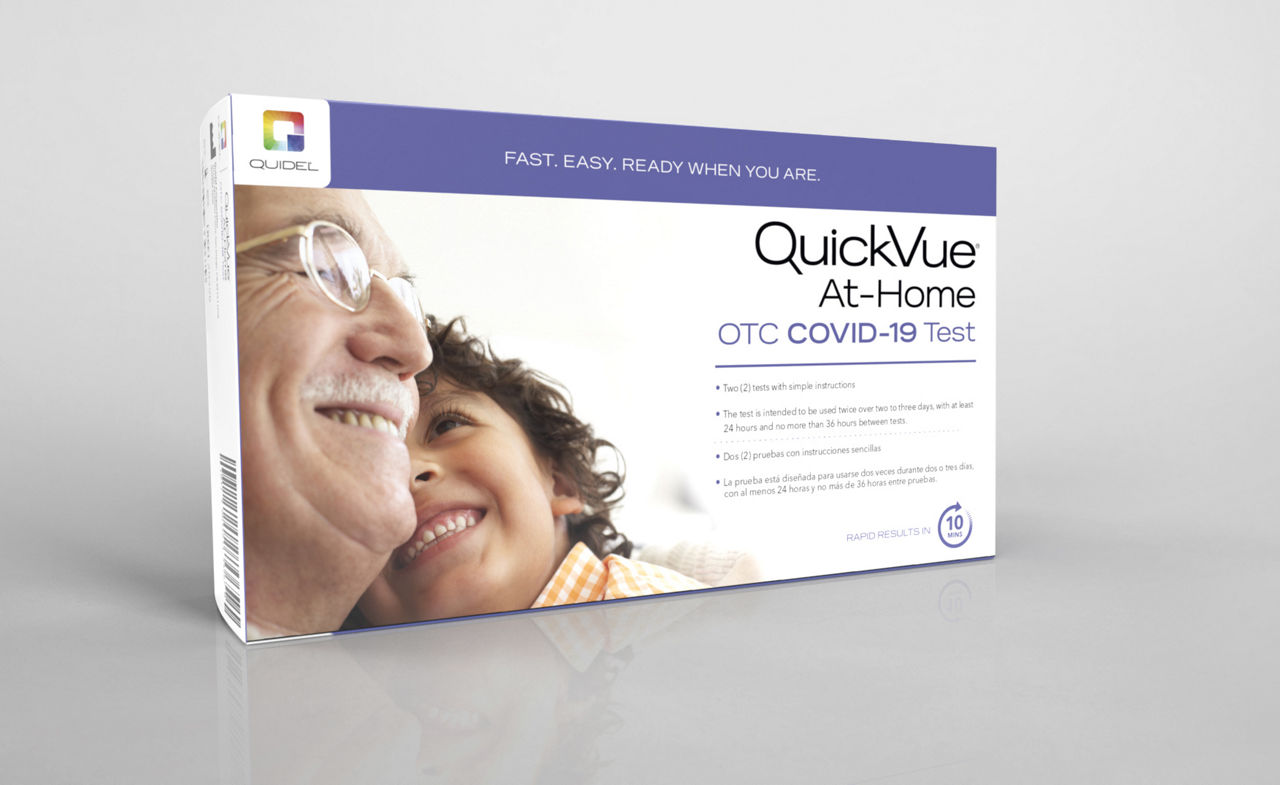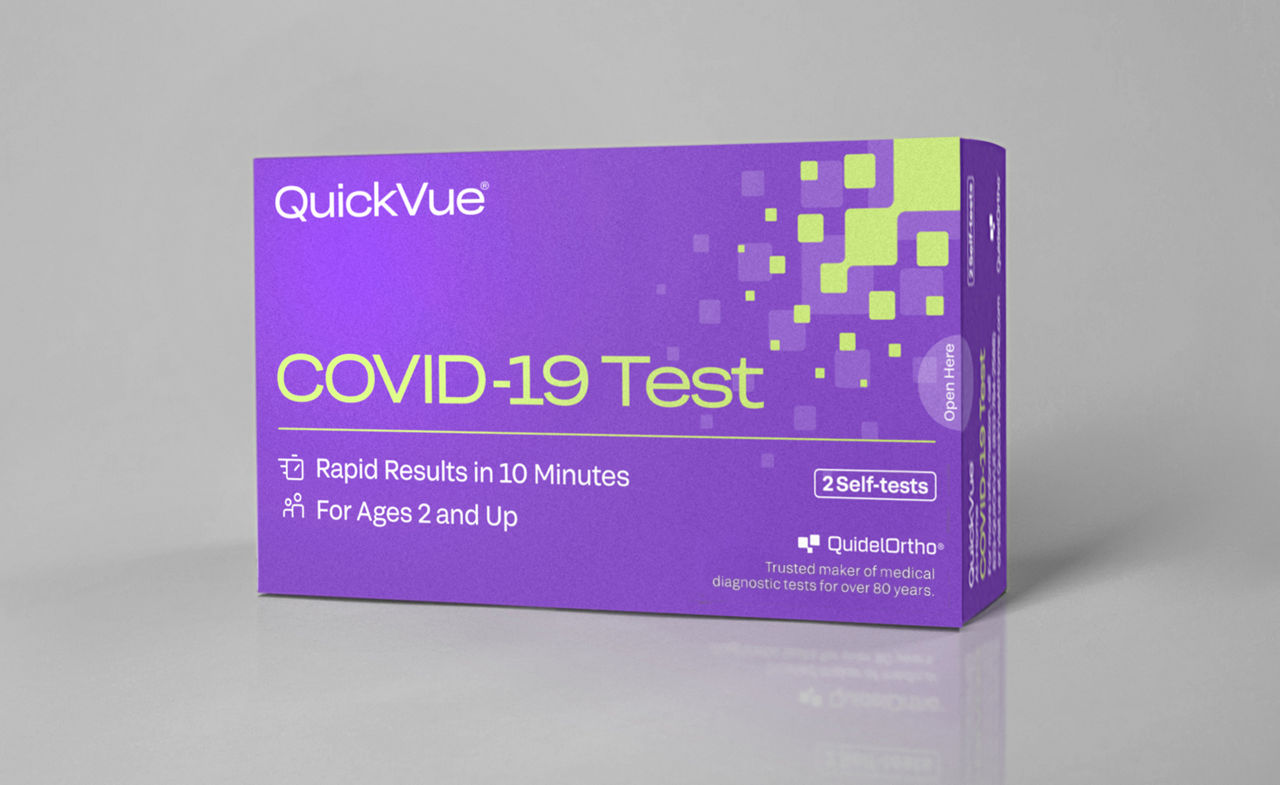
What happens if I receive a positive test result?
If you test positive with the QUICKVUE™ COVID-19 Test, then proteins from the virus that causes COVID-19 has been found in your sample and you likely have COVID-19.
Per CDC recommendations, you should self-isolate at home to help stop the spread of the virus to others. For the latest CDC recommendations and updates, visit the CDC website (opens in new tab).
Documents and resources

QUICKVUE™ At-Home OTC COVID-19 Test Kits - EUA
- FDA EUA letter
- User Instructions (English)
- User Instructions (Spanish)
- Fact sheet for Healthcare Professionals *
- Healthcare Provider Instructions for Use (English) *
- Healthcare Provider Instructions for Use (Spanish) *
*For a free printed copy, please contact us.
Our QUICKVUE™ At-Home OTC COVID-19 Test has received 510(k) clearance from the U.S. Food and Drug Administration (FDA) under the new name – QUICKVUE COVID-19 Test.
The QUICKVUE COVID-19 Test is a visually read lateral flow immunoassay device intended for the rapid, qualitative detection of SARS-CoV-2 nucleocapsid protein antigens directly in anterior nasal (nares) swab specimens from individuals with signs and symptoms of COVID-19 within the first 5 days from symptom onset. This test is for non-prescription home use by individuals aged 14 years or older testing themselves, or adults testing individuals aged 2 years or older.
The QUICKVUE COVID-19 Test does not differentiate between SARS-CoV and SARS-CoV-2.
All negative results are presumptive. Symptomatic individuals with an initial negative test result must be re-tested once between 48 and 72 hours after the first test using either an antigen test or a molecular test for SARS-CoV-2. Negative results do not preclude SARS-CoV-2 infections or other pathogens and should not be used as the sole basis for treatment. Positive results do not rule out co-infection with other respiratory pathogens.
This test is not a substitute for visits to a healthcare provider or appropriate follow-up and should not be used to determine any treatments without provider supervision. Individuals who test negative and experience continued or worsening COVID-19 like symptoms, such as fever, cough and/or shortness of breath, should seek follow up care from their healthcare provider.
The performance characteristics for SARS-CoV-2 were established from January 2021 to February 2024 when COVID-19 variants Alpha, Delta, and Omicron were dominant. Test accuracy may change as new SARS-CoV-2 viruses emerge. Additional testing with a lab-based molecular test (e.g., PCR) should be considered in situations where a new virus or variant is suspected.

